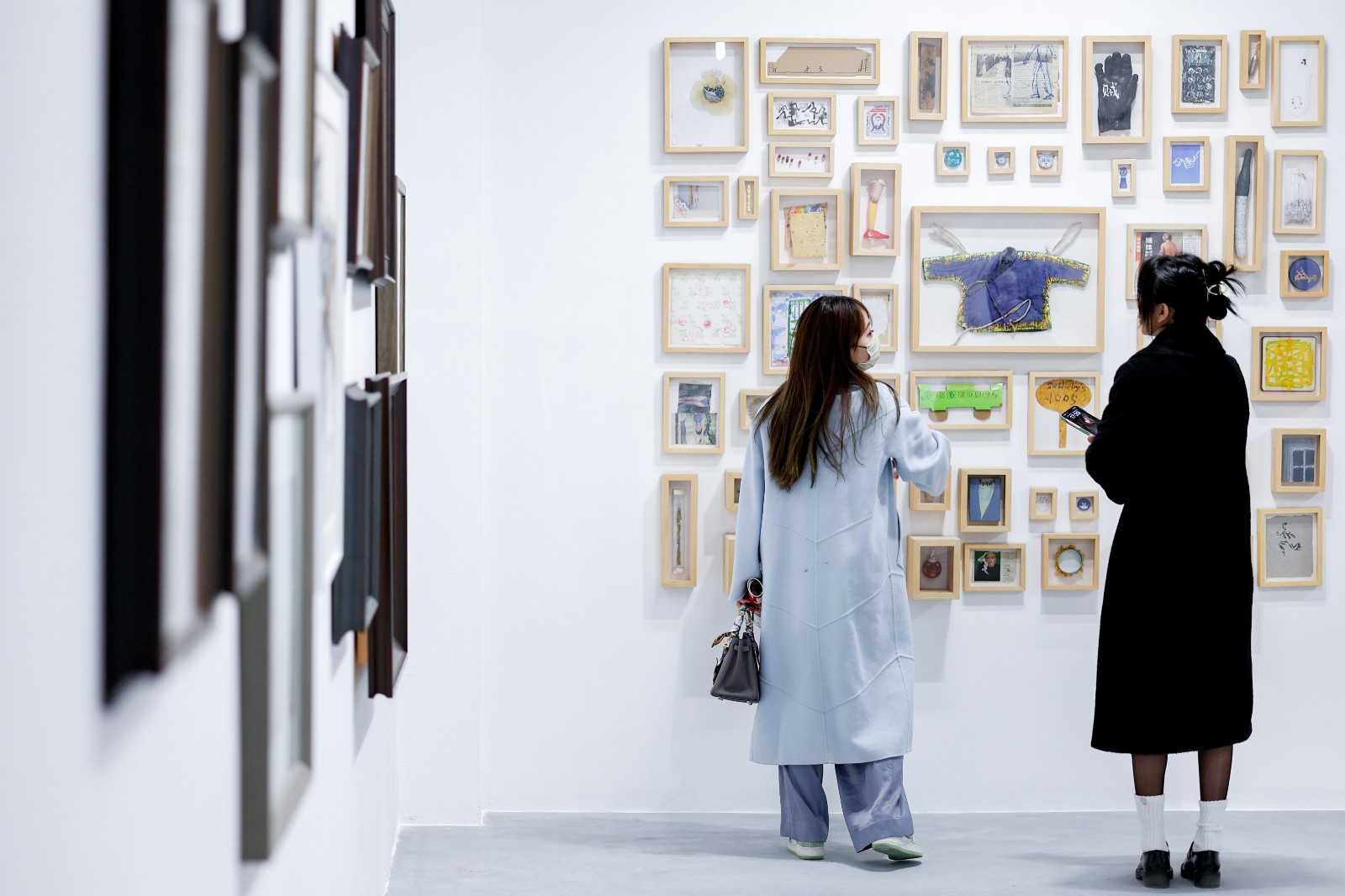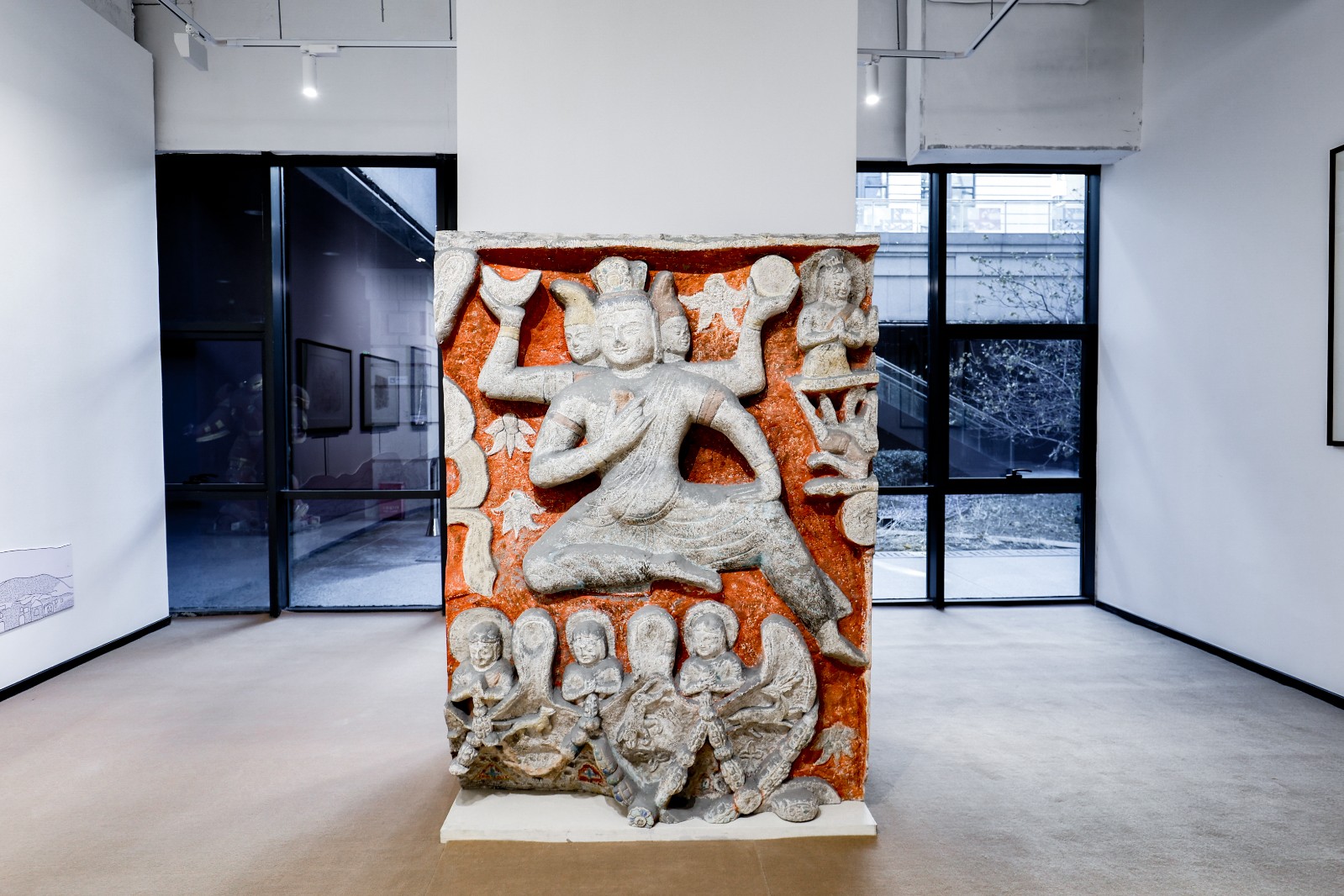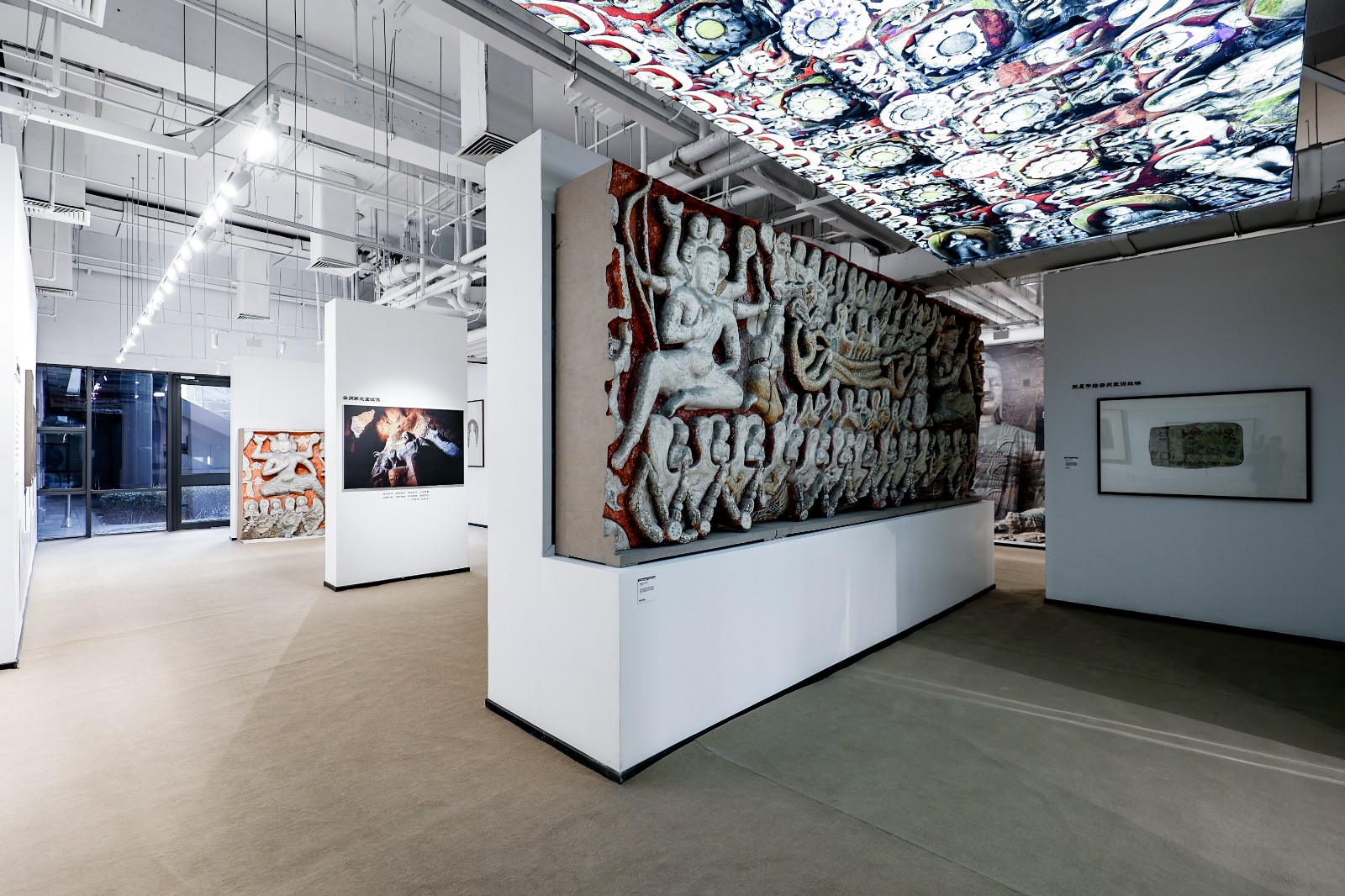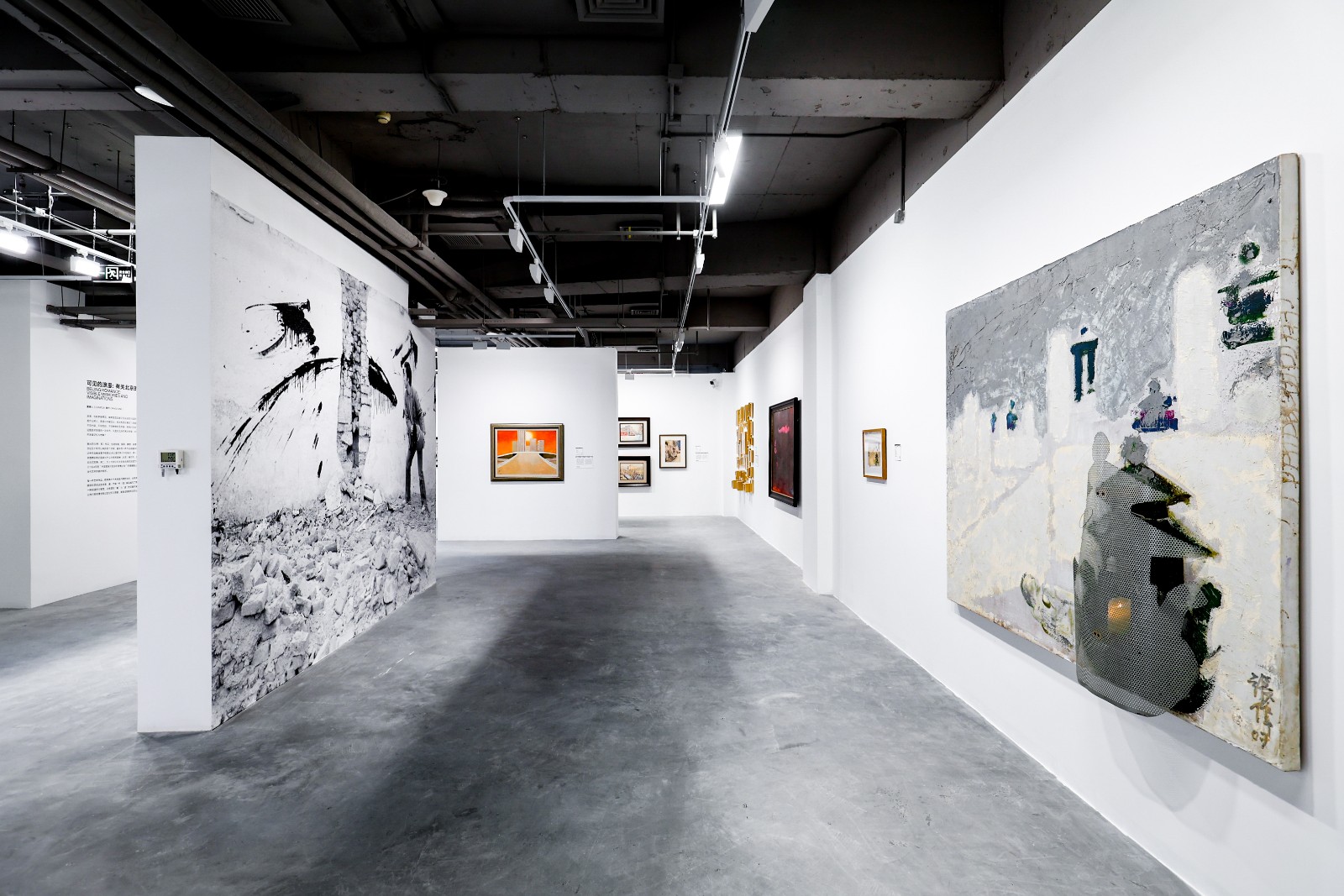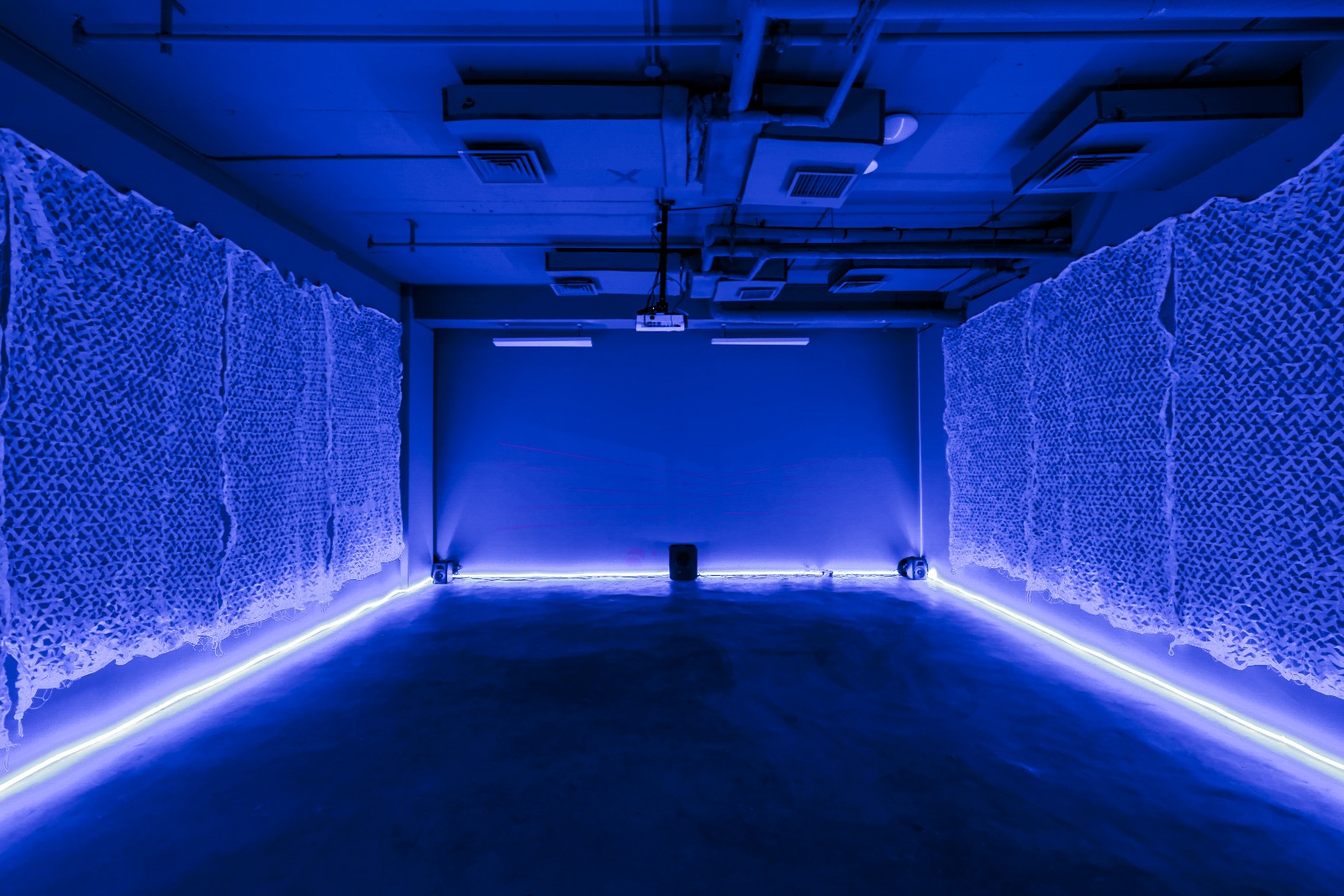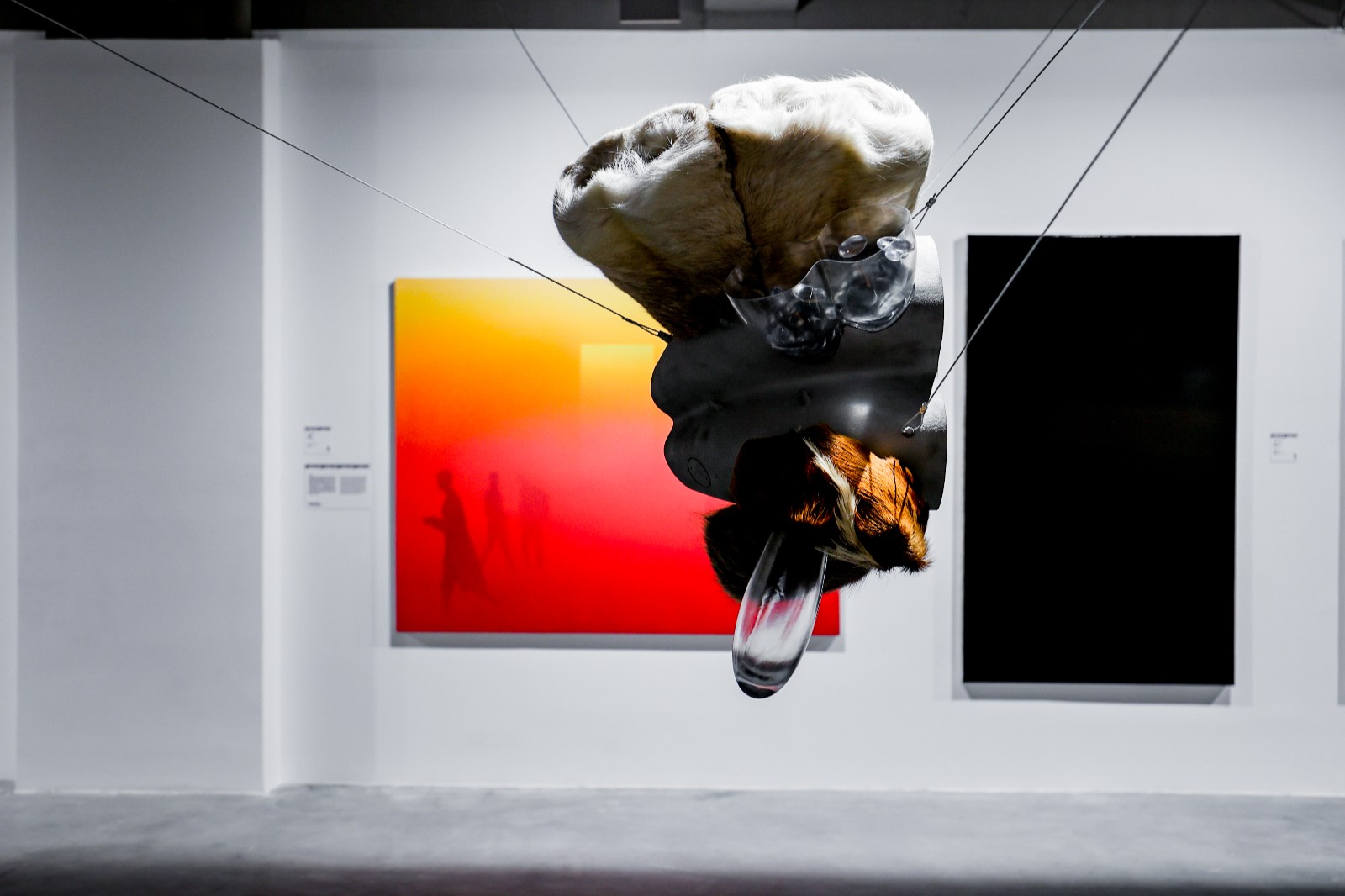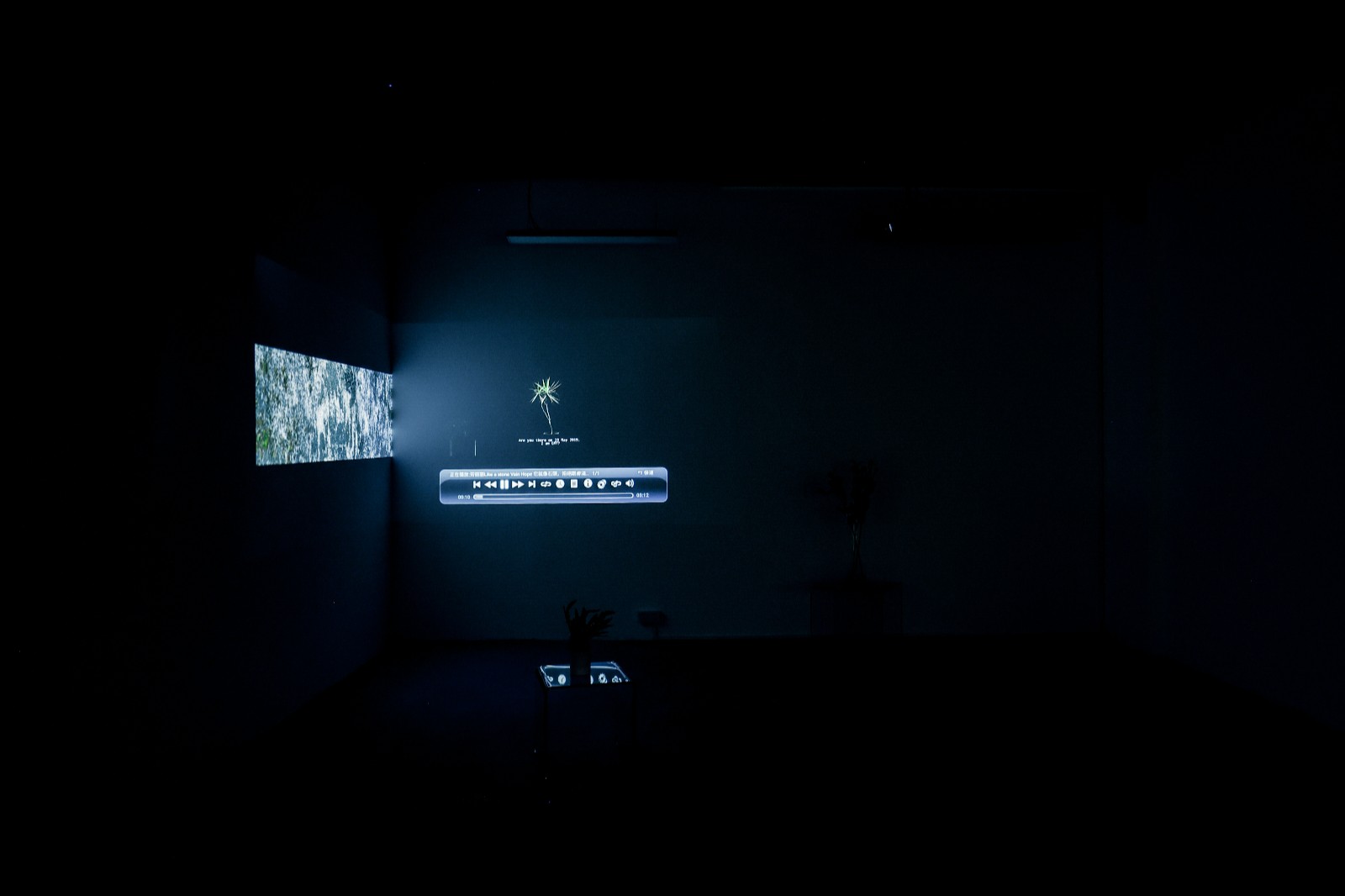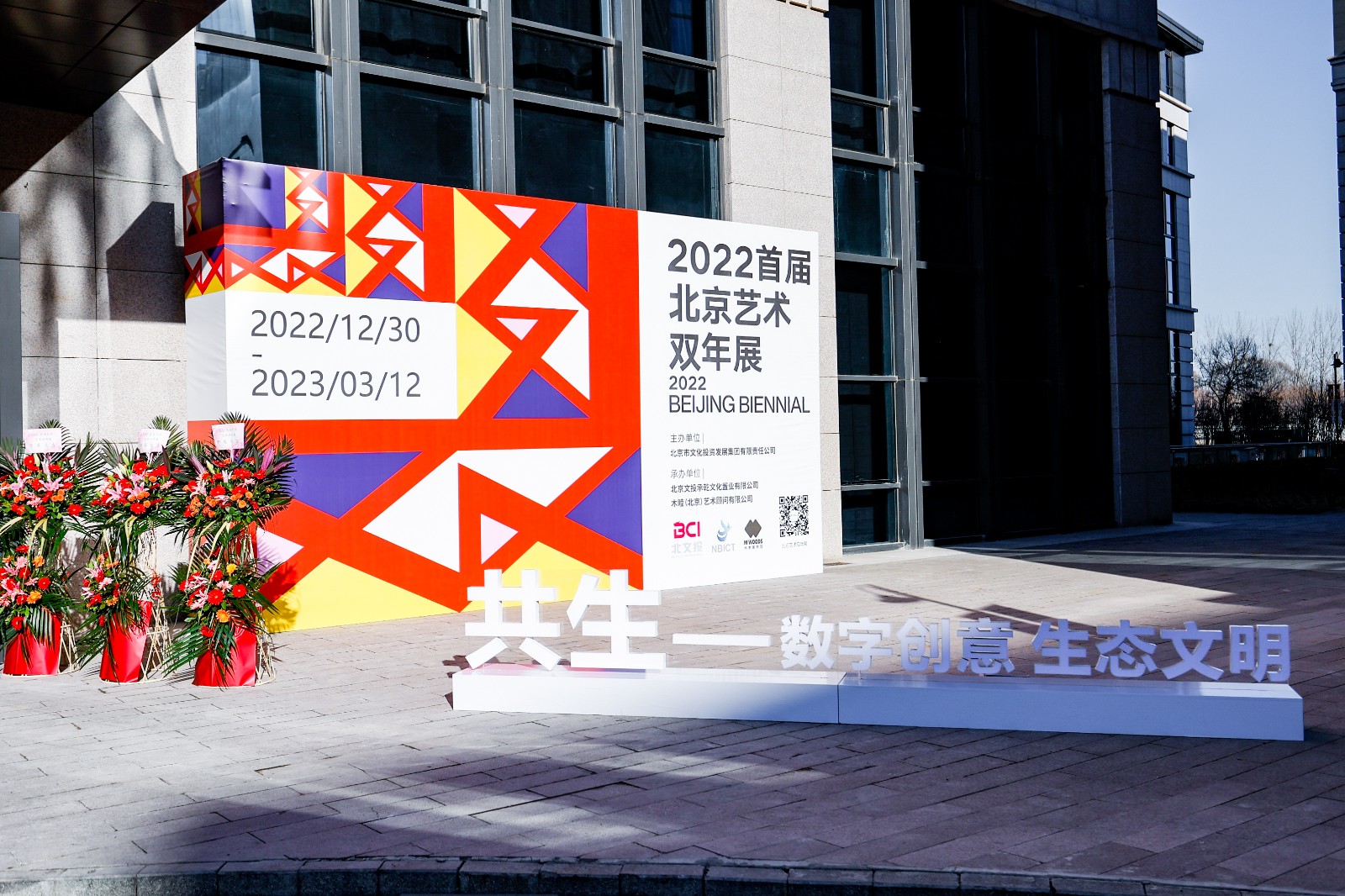
Beijing has formed its artistic temperament of “harmony in diversity” with an urban spirit that is both traditional and diverse in an open-minded way. Painting, architecture, sculpture, literature, music, drama... All kinds of art forms have constituted a flourishing art ecology in this city, and they interact and promote each other in mutual developments. With a concern about the fate of all mankind and the new development coordinates of human civilization, 2022 the First Beijing Biennial officially kicked off by the end of 2022 in the National Base for International Cultural Trade, Beijing. With the theme on “symbiosis”, the exhibition adopts the "1+2+3" model, namely: one main venue (National Base for International Cultural Trade), two sub-venues (Friendship Art Community, M WOODS Hutong), three exhibition forms (themed exhibition, parallel exhibitions, satellite exhibitions), jointly presenting more than 390 works by 240 artists from 20 countries and regions, aiming to build a community with a shared future for mankind in the post-pandemic era, while explaining the relationship between human civilization and the new developing concept of the harmonious coexistence of natural ecology and the integration of digital technology and creative design.
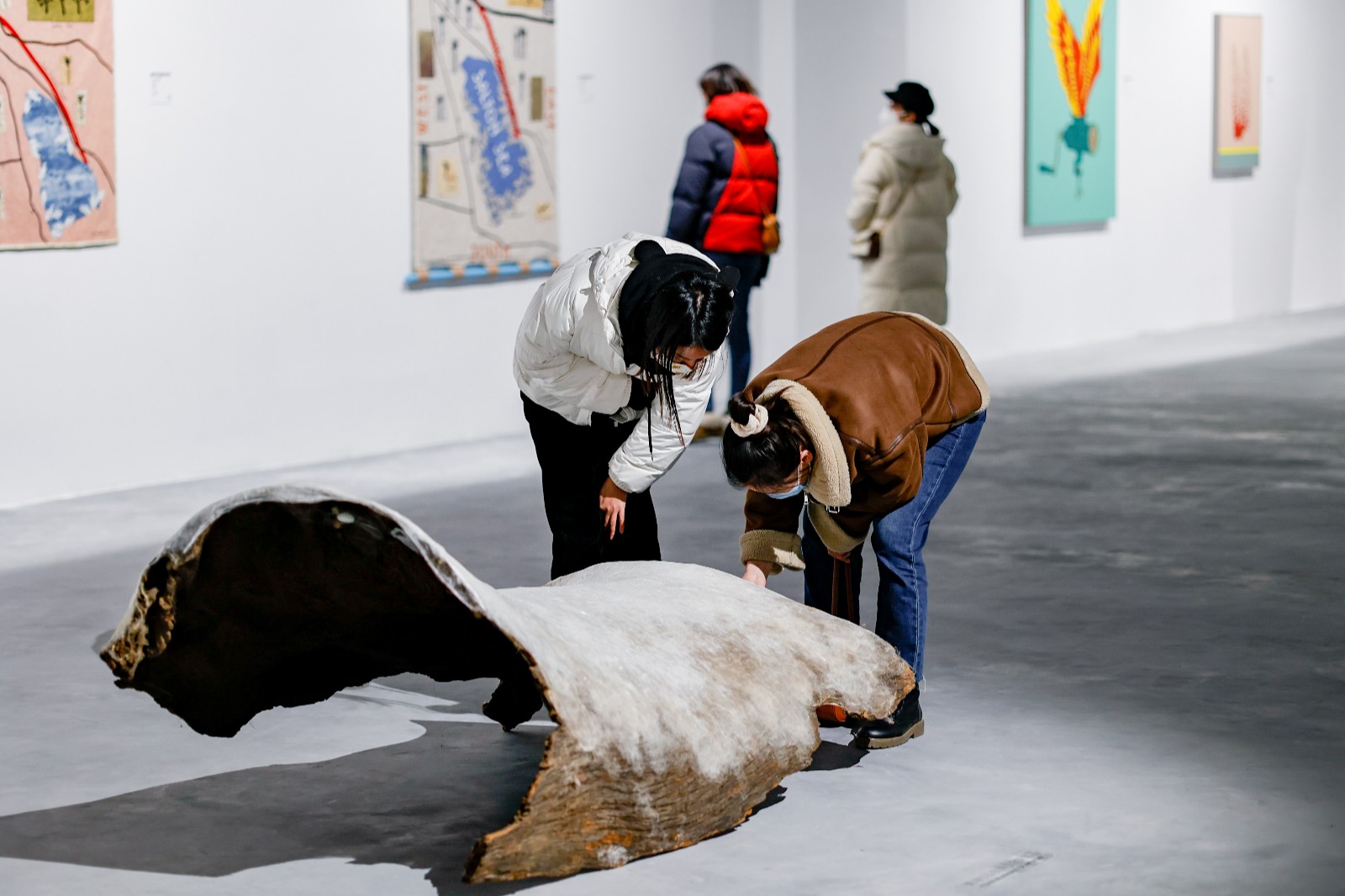
As Fan Di’an, President of the Central Academy of Fine Arts and Chairman of the China Artists Association elaborated, “The 2022 Beijing Biennial takes the very distinctive theme of ‘symbiosis’ to explore the relationship between humans and history, humans and nature, humans and science, humans and the environment, as well as ecology through different categories of art works. Meanwhile, in terms of the specific forms of art, the Biennial has formed a strong sense of ‘dialogue’ between China and foreign countries, among generations of artists, and between artworks and audiences. ‘Dialogue’, a cultural attribute of art aesthetics and art appreciation that we especially want to emphasize today, as the pursuit of the Biennial, I think this makes the First Beijing Biennial more committed to confronting the public and facing the restoration of social and cultural life after the influence of the pandemic, which can also be regarded as a special manifestation of the idea that all walks of life in Beijing will work together to promote the construction of a national cultural center.”
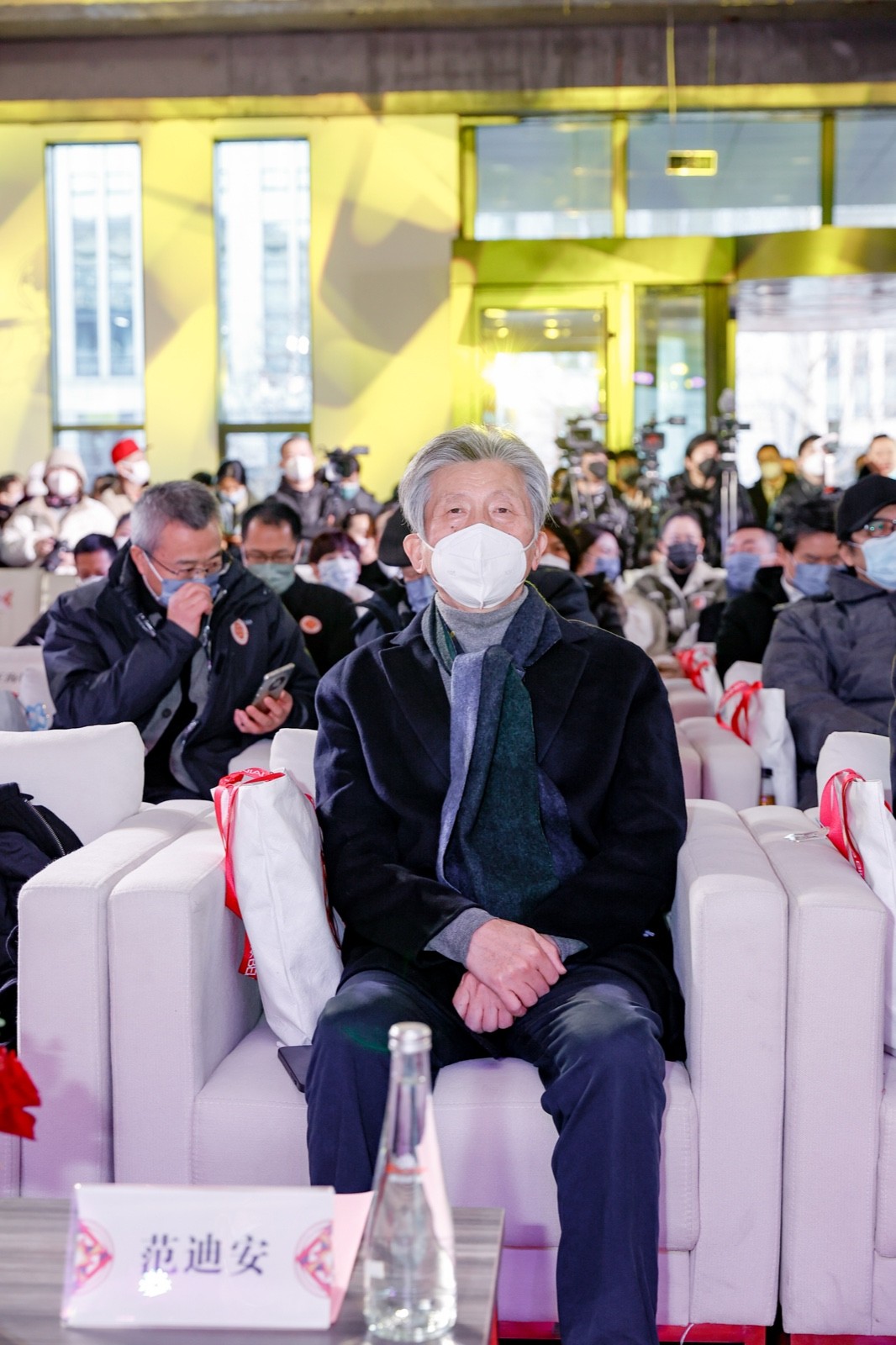
Fan Di’an, President of the Central Academy of Fine Arts and Chairman of the China Artists Association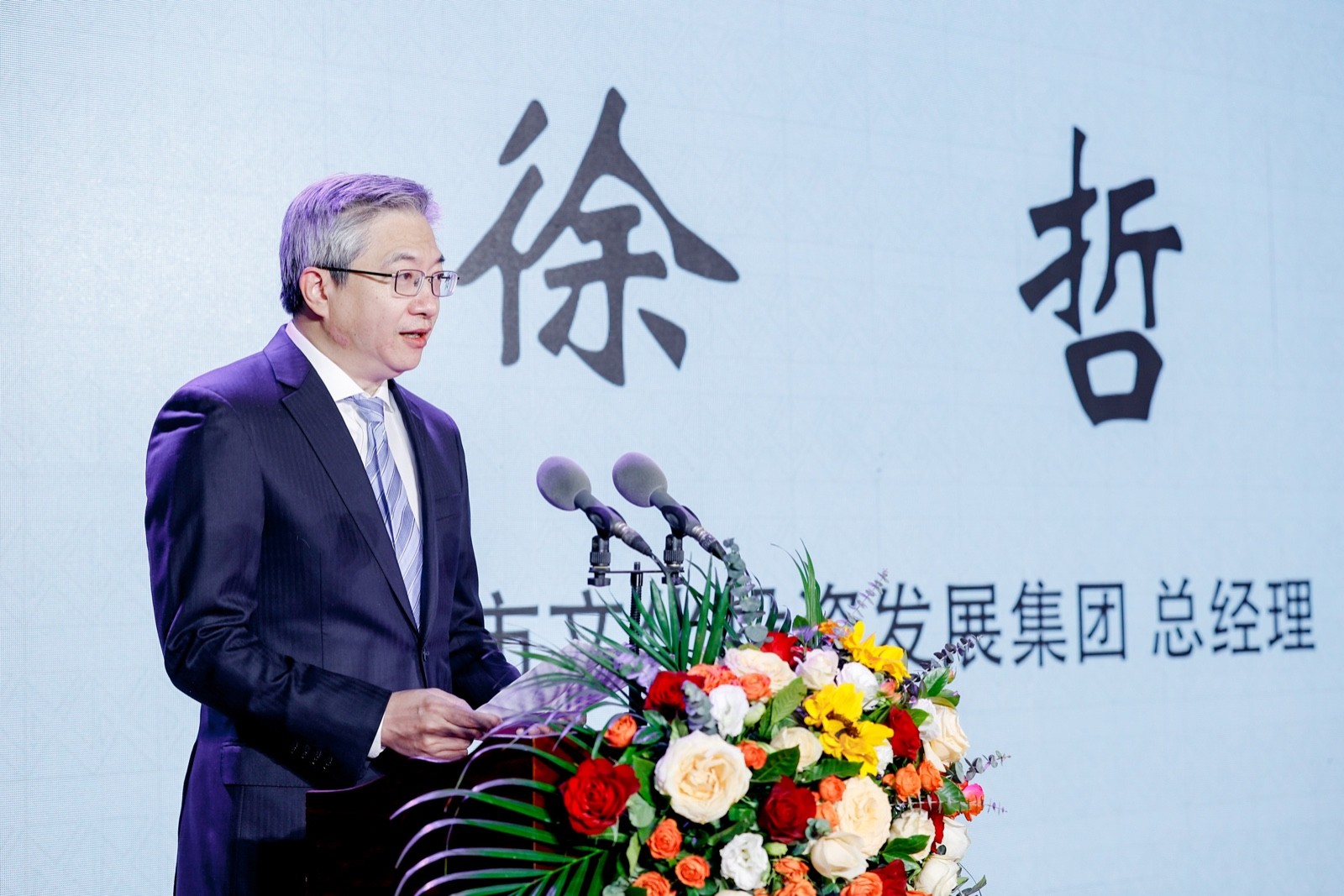 Xu Ze, Deputy Party Secretary and General Manager of Beijing Cultural Investment Development Group Co., Ltd.
Xu Ze, Deputy Party Secretary and General Manager of Beijing Cultural Investment Development Group Co., Ltd.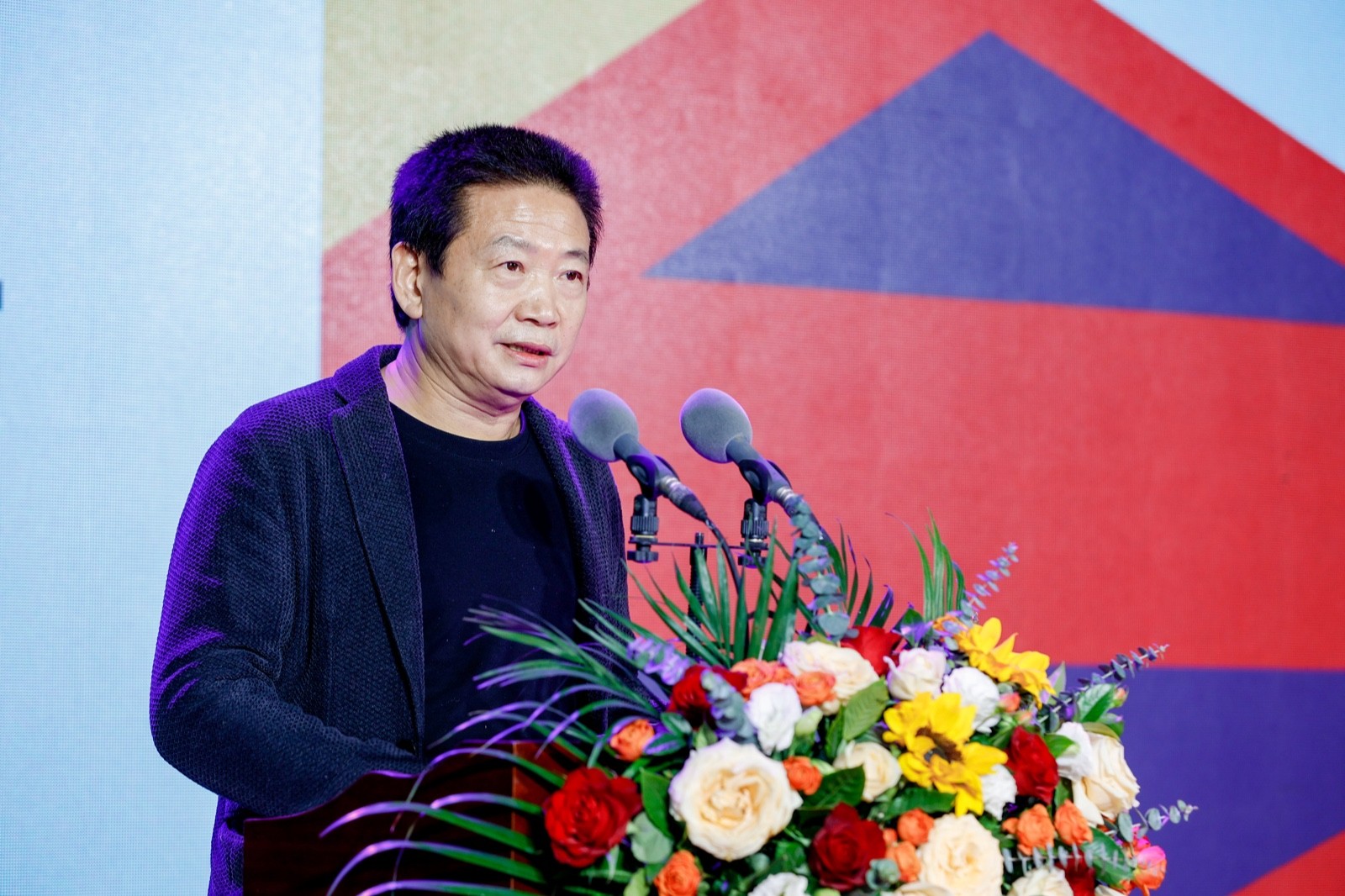 Zhang Zikang, Member of Beijing Biennial Art Committee and Director of CAFA Art Museum
Zhang Zikang, Member of Beijing Biennial Art Committee and Director of CAFA Art Museum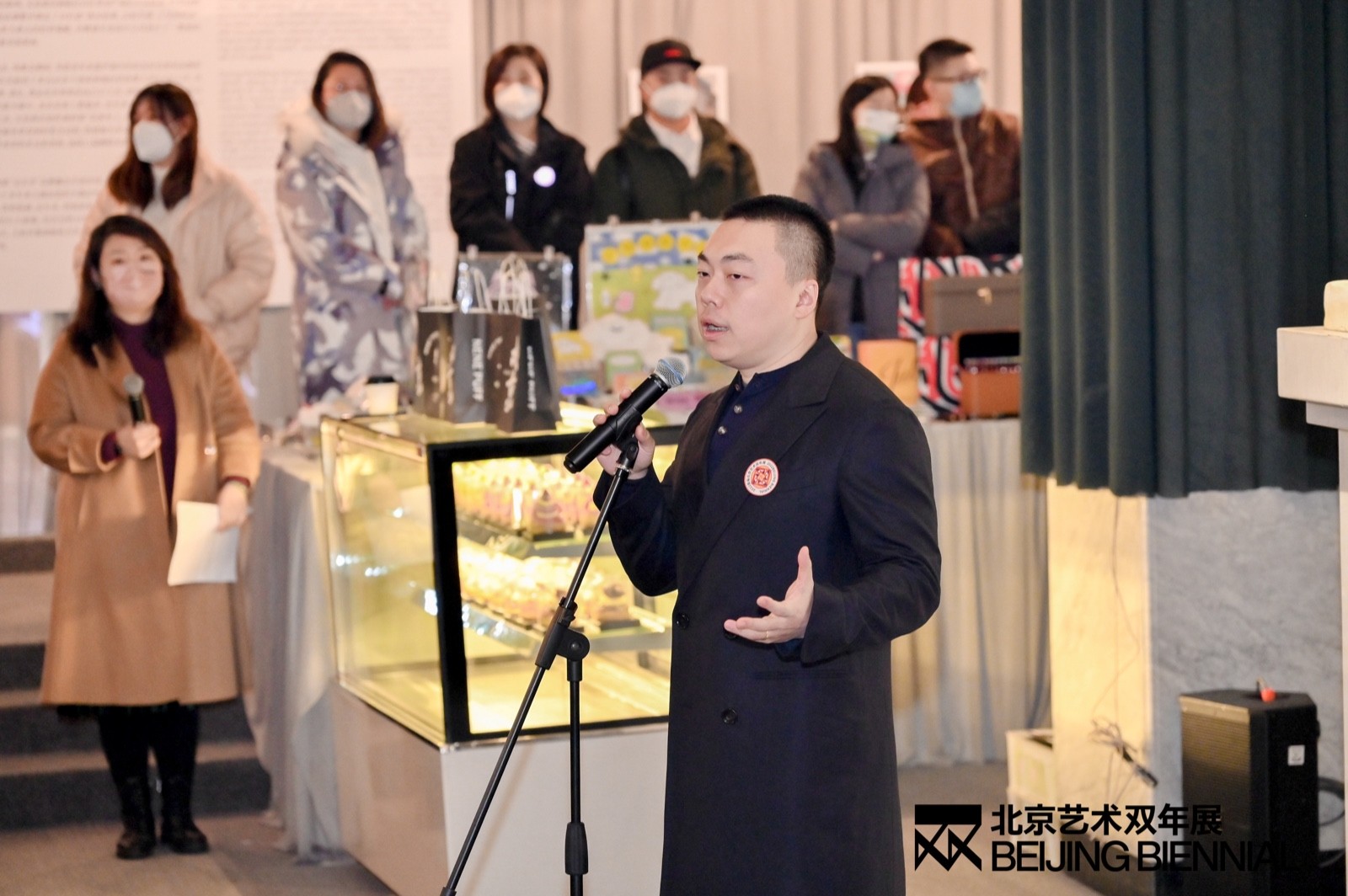 Lin Han, Responsible Organizer Representative of 2022 Beijing Biennial and Founder of M WOODS
Lin Han, Responsible Organizer Representative of 2022 Beijing Biennial and Founder of M WOODS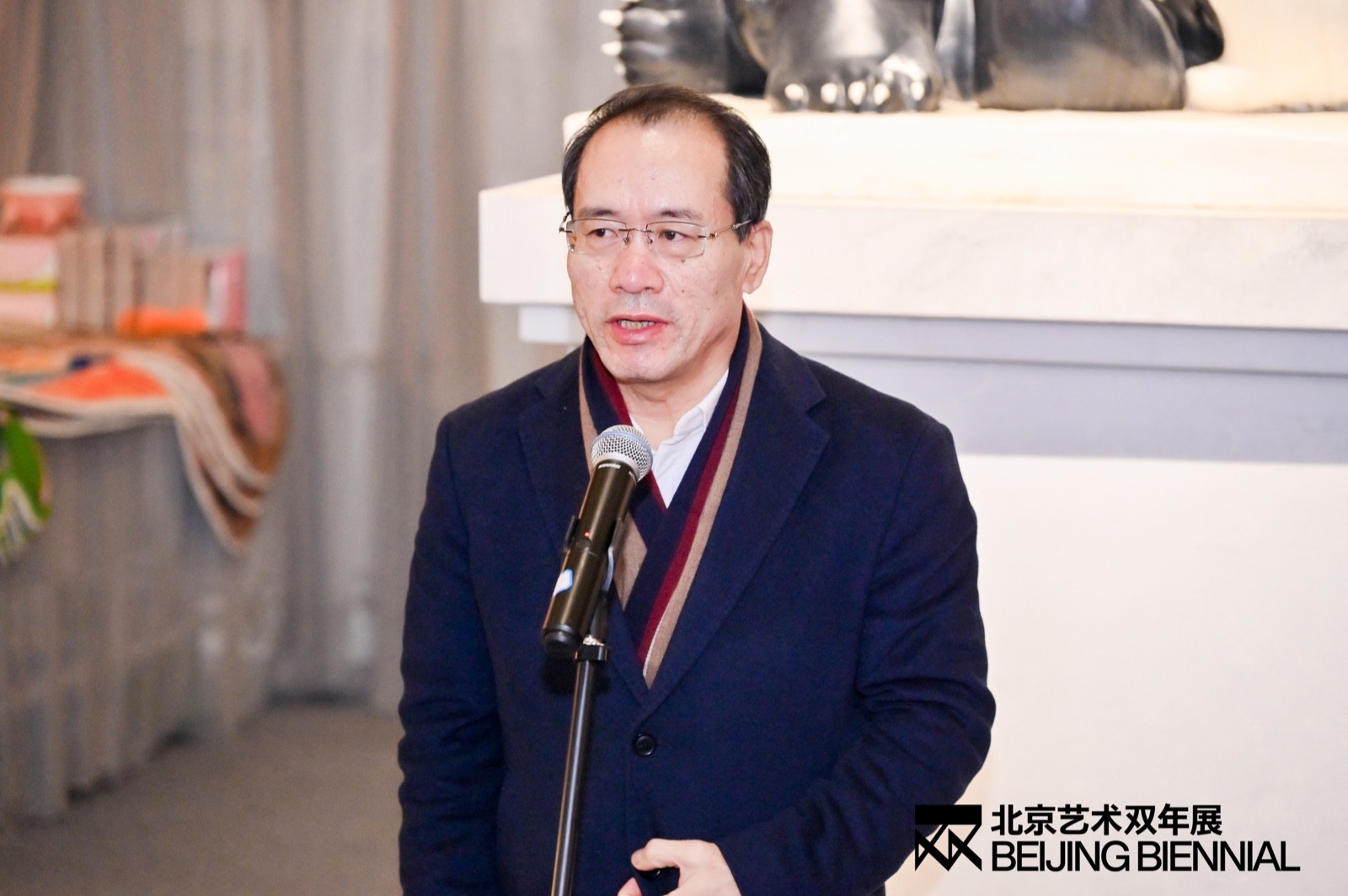 Zhou Qing, Executive Vice President of Beijing Wangfujing Department Store (Group) Co., Ltd.
Zhou Qing, Executive Vice President of Beijing Wangfujing Department Store (Group) Co., Ltd.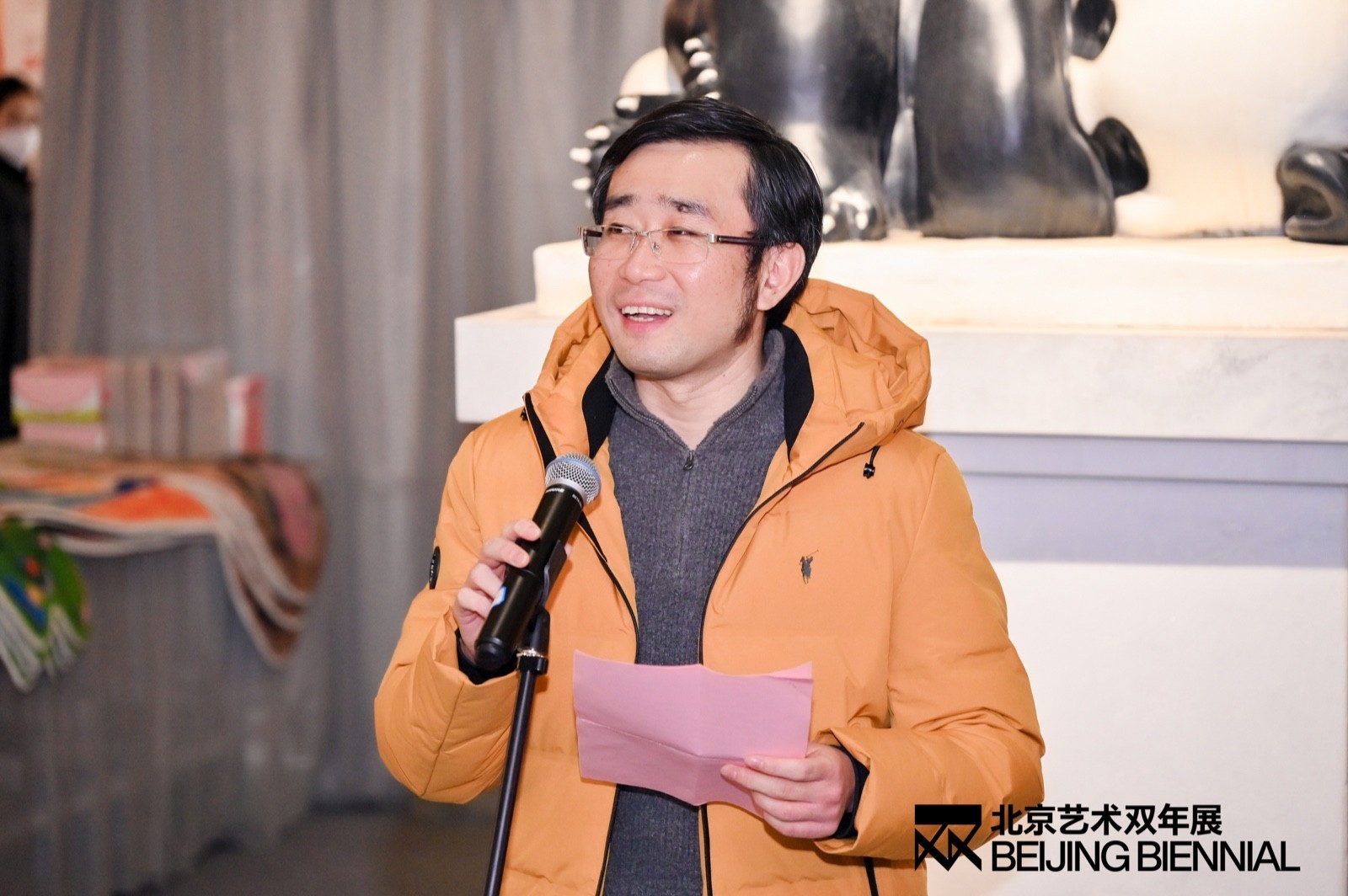 Boliang Shen, Curator of Magic Square: Art and Literature in Mirror Image
Boliang Shen, Curator of Magic Square: Art and Literature in Mirror Image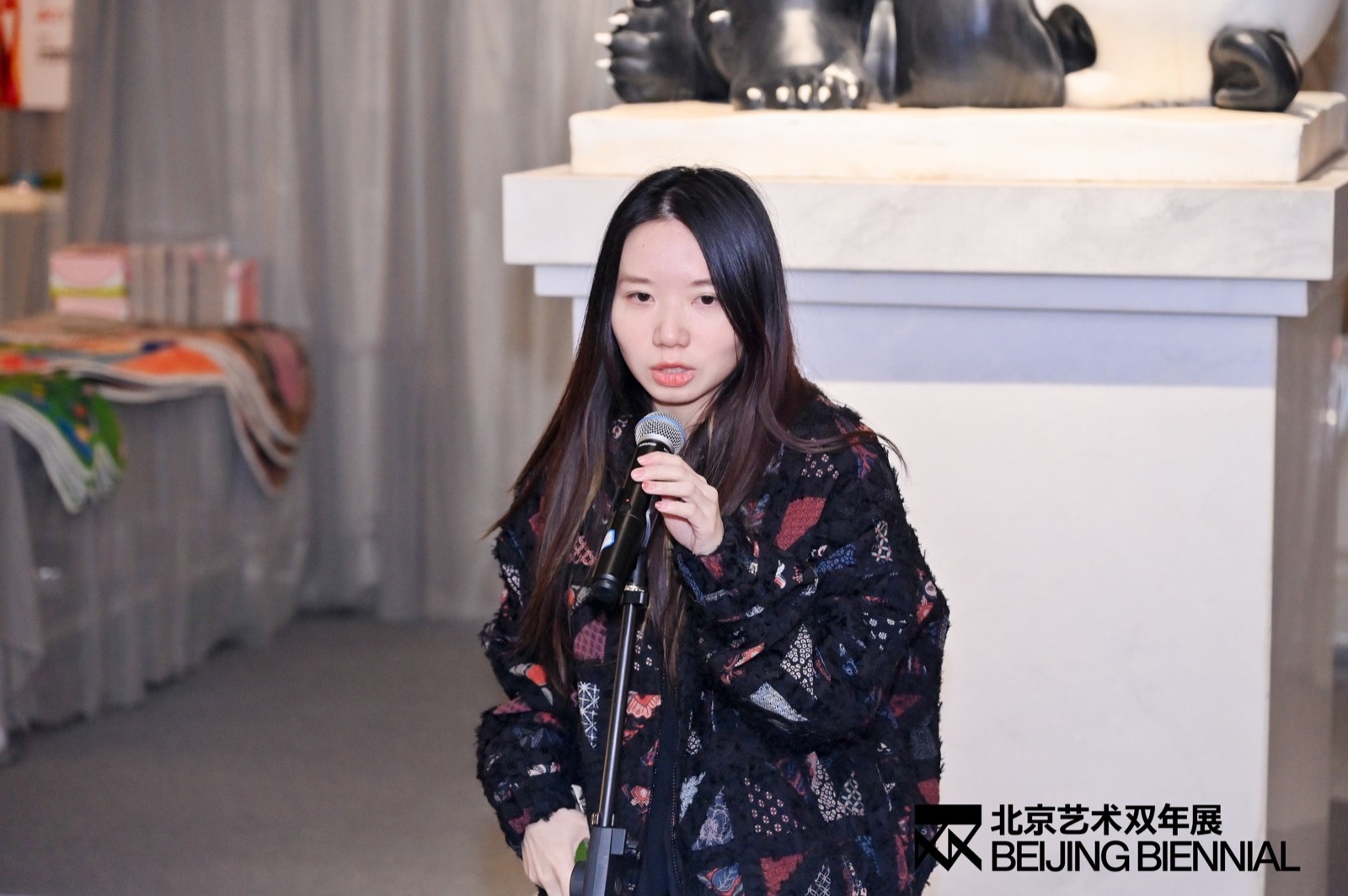 Iris Long, Curator of Earth Heat Flow: The Visitor Who Returns to Solar TimeCourtesy 2022 Beijing Biennial , edited by CAFA ART INFOSections of 2022 Beijing Biennial
Iris Long, Curator of Earth Heat Flow: The Visitor Who Returns to Solar TimeCourtesy 2022 Beijing Biennial , edited by CAFA ART INFOSections of 2022 Beijing Biennial
Awaken the Life Inside the Stone
Curator: Hang Kan

Yungang Grottoes, the first large-scale grotto group in the east of Xinjiang, are precious to world heritage in China. According to the UNESCO World Heritage Committee, Yungang Grottoes “represent China’s outstanding Buddhist grotto art from the 5th to the 6th century A.D., and the Five Tan Yao Caves in Yungang Grottoes, with a strict and unified layout, are classic masterpieces showcasing the first peak in Chinese Buddhist art.” During his inspection tour in Yungang Grottoes, General Secretary Xi Jinping emphasized that “the Yungang Grottoes belong to China and the world.” The Chinese civilization has its unique lineage, but it was never closed in. The large amount of cultural heritage left on the land of China demonstrates the ability of ancient Chinese people to leverage the natural environment and their boundless creativity. This cultural heritage stands as proof of the evolution of Chinese civilization, while constantly responding to historical changes and new challenges of the times. Yungang Grottoes, in fact, are perfect examples. In nearly 100 years of development, Pingcheng (now Datong, Shanxi) in the Northern Wei Dynasty ranged “from the west of the Congling Mountains, as far as to Daqin (the ancient Chinese name for the Roman Empire), a hundred countries and thousands of cities submitted to the authority voluntarily, and merchants and traders are rushing to the frontier every day.” The exchanges between China and the West boomed in an unprecedented manner. Communication, interaction, and integration among ethnic groups became increasingly frequent and in-depth, laying the foundation for the unity and prosperity of the Sui and Tang dynasties.
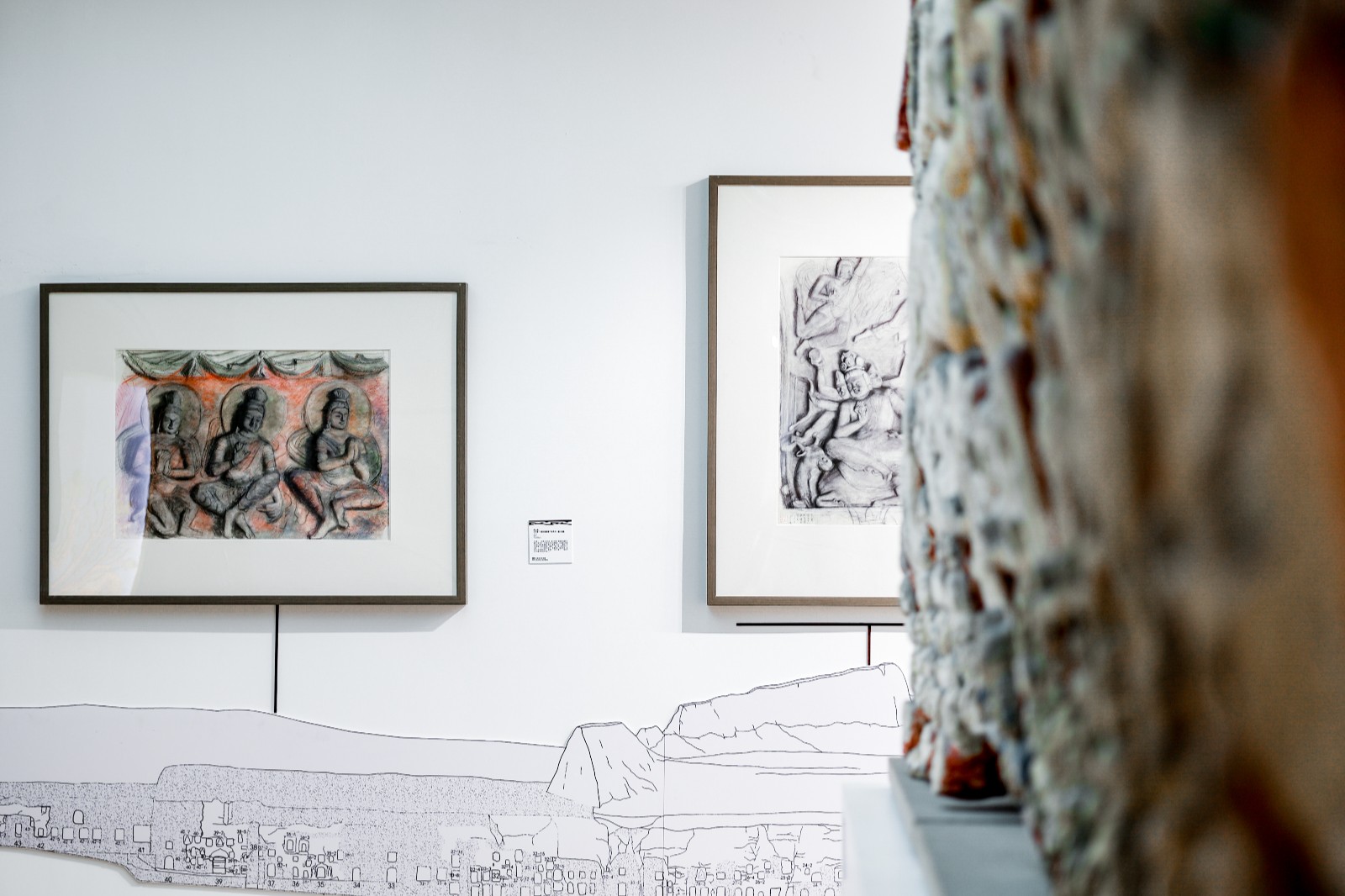
Yungang Grottoes is an epitome of such a process, represented by the world-renowned grand open-air Buddha statue in Cave 20. Cave 20 is among the five caves developed by the eminent monk Tanyao in the Northern Wei Dynasty. Before that, the country had never seen such grotto temples with such a “neat layout and harmonious and unified style”. It marks the start of the “Yungang model” and becomes the symbol of Yungang Grottoes at present.
However, it is not complete today. The standing Buddha statue at the west wall, with a huge volume and a height of nearly ten meters, is difficult to be pieced together and restored. The original look of Cave 20 can be reproduced by technical means and digital restoration. The 53-meter-high Buddha statue of Bamiyan in Afghan was bombed out but successfully restored via light projection by a Chinese team with advanced technology of architectural projection.
Blueprint Beijing
Curator: Ma Yansong
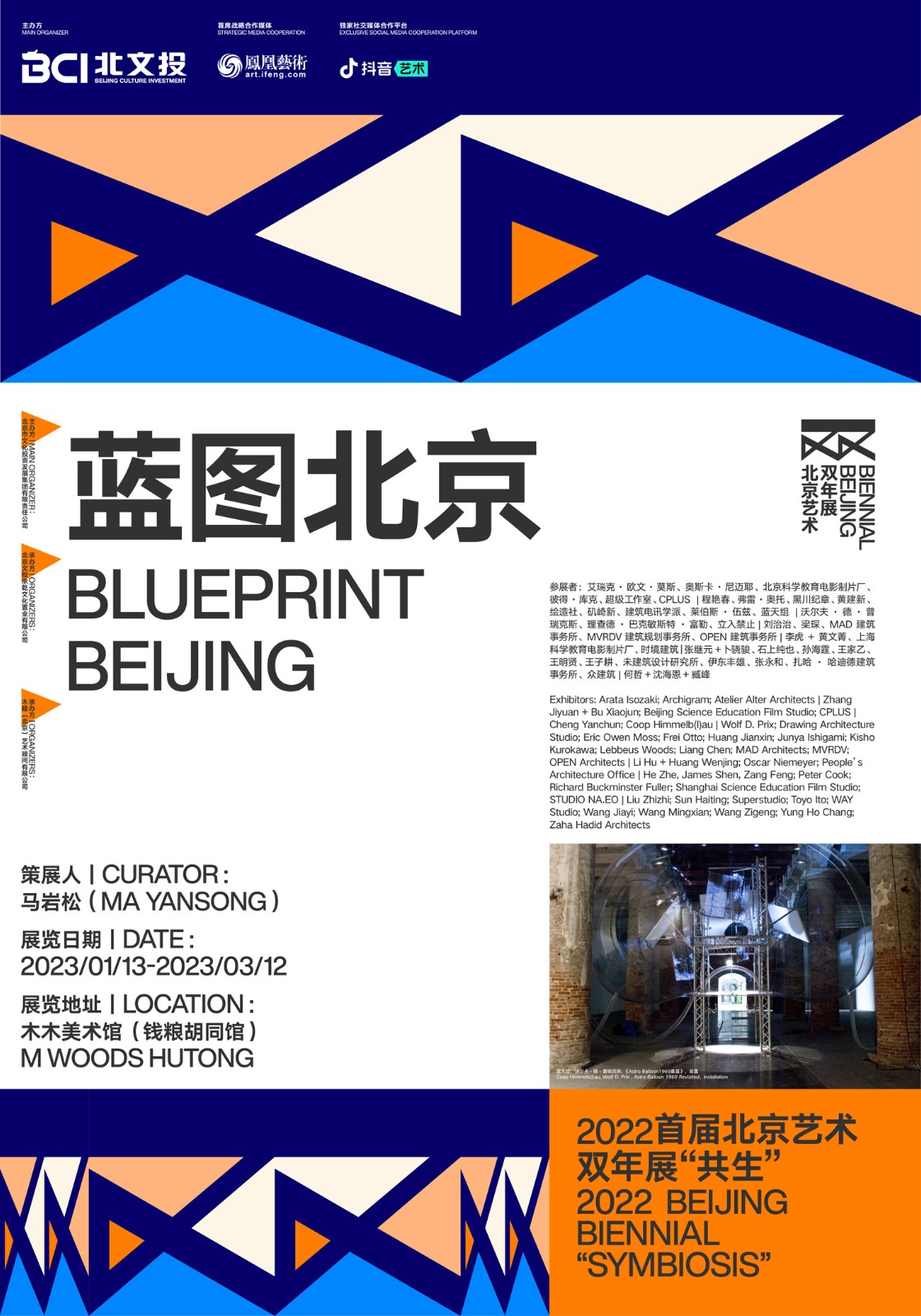
The term ‘blueprint’, as an architect’s tool, refers to both the archive of history and the imagination of the future. Great architects transform reality through visionary thinking. Buildings are the largest and most long-lasting public medium in human society, and it is crucial to continuously maintain advancements that inspire and contrast with the ethos and culture of the city, the region and the nation.
History is the wealth of Beijing, not its end. Ignoring tradition is an abandonment of identity, but one must also consider the long-term goals and future of the city. Through the imagining of the future, we can find temporary anchors between tradition and innovation, local and global, the individual and a group, preservation and development. To find a new way through constant confrontation and tension — it is an experiment that never ends.
Endless Conversations
Curator: Zhu Zhu
Assistant Curator: Li Rongwei
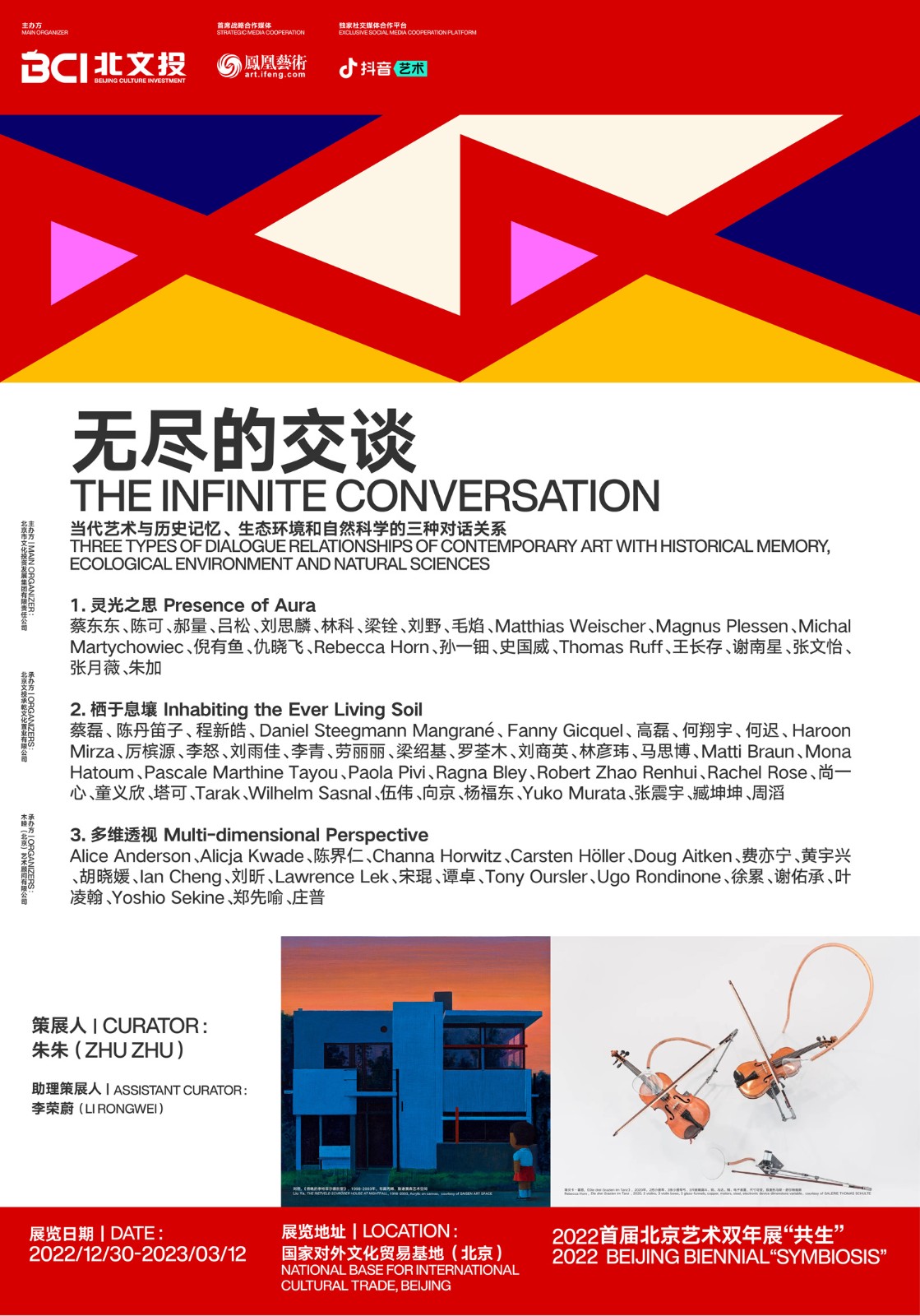
The essence of art can be understood as conversations in innumerable forms: conversations of the artist with him/herself and with others, conversations with art history, humanities and many other disciplines, conversations with nature, history, reality and future, as well as conversations between the finite and the infinite. Great and genuine artworks can go beyond different eras, backgrounds and limitations, engage directly and offer spiritual dialogues with the mind of future generations and inspires human society on a better or even brand-new mode of living together. The exhibition consists of three chapters:
1. Presence of Aura
This chapter focuses on the intervention of digital images on personal experiences: digital technology has brought about the possibility of sharing global image resources across places, times, and fields, but also led to their flooding and overproduction. The reflection, reuse and reconstruction of the heritage of art history saturated with what Walter Benjamin describes as “Aura”, and digital images continuously derived today constitute an important dimension and methodology for artists to interpret and narrate their personal experience.
2. Inhabiting the Ever Living Soil
This chapter focuses on the intervention of the ecological environment on the process of the artistic generation: just as human beings and nature have always maintained an unbreakable bond, the environmental changes individuals and communities face in their growth, habitats, or migrations have always been an important theme in art, which also involves a reflection on modernity and the society of the spectacle. Artists tend to work in a more comprehensive way, combining and extending to the dimensions of field survey, historical archaeology, and more. Creative form, on the other hand, is not only reflected in the selection and application of local materials but also in the creation that combines natural forces, such as climate, wind power, water flow, cultivation processes and other elements, so that the works themselves constitute a mixed ecosystem.
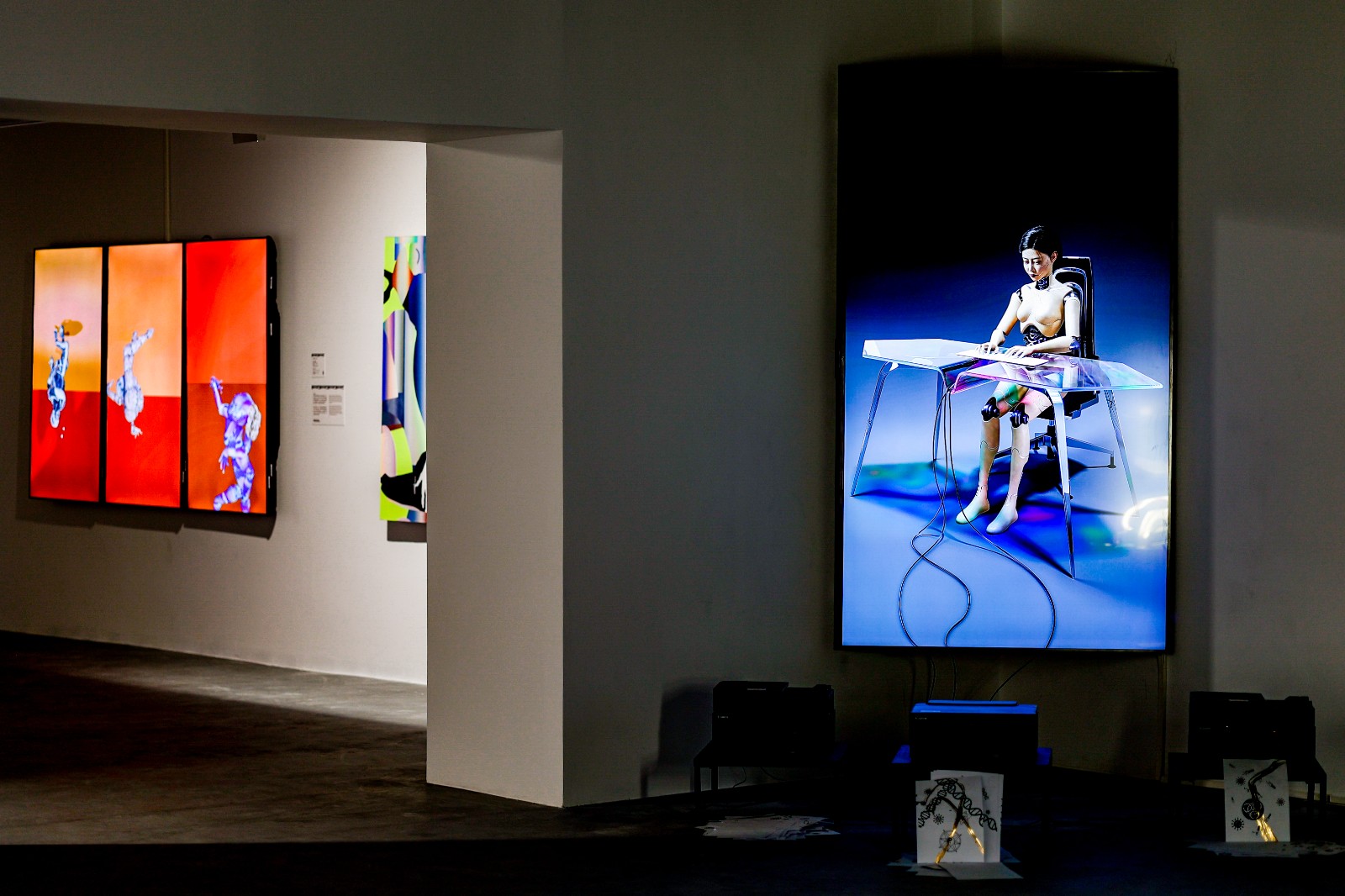
3. Multi-dimensional Perspective
This chapter focuses on the intervention of natural disciplines on artistic concepts: historical achievements and latest discoveries from mathematics, physics, astronomy, life sciences, and other fields, via the translation and imagination of artists, with the evolution of medium and the technology of expression, echo and unveil different layers of the world in various visual manifestations that contain conjectures about the future and metaphysical order.
In our exhibition hall, 1F is for the first chapter “Presence of Aura”, 2F and 3F are for the second chapter “Inhabiting the Ever Living Soil”, and 4F is for the third chapter “Multidimensional Perspective”.
Beijing Romance: Visible Memories and Imaginations
Curator: Fang Fang

The Chinese word for romance, or its transliteration luomandike (romantic), emerged in the contemporary era after the May Fourth New Culture Movement. How many types of romances are there? What is romance like? Can it be defined? Is there a fixed pattern? The original intention of this exhibition is to search for artists of different generations, genders, and backgrounds across the scattered chapters of art history and brings together their works completed in Beijing with a romantic spirit. This is both a rumination on romance and a reexamination of Beijing: how many visible romantic memories and imagination did this great city, renamed in 1949, retain?
The 50 pieces (groups) of works on display, including paintings, photos, sculptures, installations, videos, etc., were created in different periods since the 1950s. Among them, the earliest one was Dai Ze’s 1953 watercolor painting Central Academy of Fine Arts. These works were displayed in two different places more than 30 kilometers apart: Yard 3, Jinhang East Road, Shunyi District in the suburb and Friendship Art Community (originally Beijing Friendship Store) located at the north side of East Chang’an Avenue in the city center. The former is set up as a traditional Beijing courtyard with “crescent gates” of different shapes inside the National Base for International Cultural Trade (Beijing), adjacent to the Capital Airport. The latter is “China’s first large foreign-related retail enterprise” established in 1964. Unprecedentedly, it became a temporary site for displaying contemporary art after relocation.
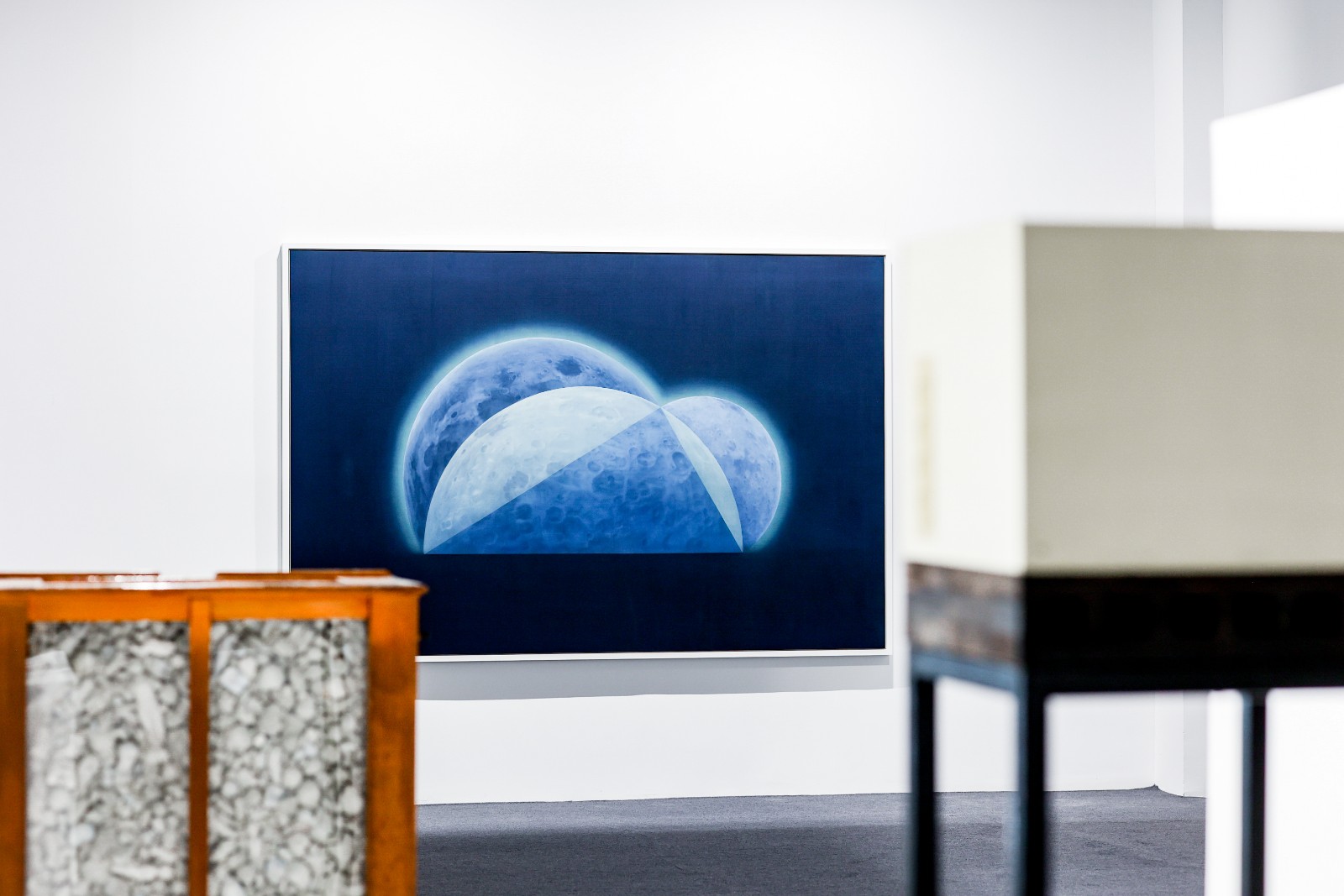
Each artwork has not only its own coordinates within the art system but also its social and historical space-time positioning, which the curator tries to extract and display through a brief written description for each piece (group) of exhibits, thereby inviting the action of reading into viewing. The curator aims to bring the audience closer to the 39 artists through the dual experience of “watching” and “reading,” attempting to elicit the individual memories and imaginations from the audience by utilizing those of the artists.
Magic Square: Art and Literature in Mirror Image
Curator: Boliang Shen

Magic square is a square array of numbers originated from ancient Chinese “Luoshu” (characters associated with the legendary Emperor Yu), in which the sums of numbers in each row, column, and diagonal are equal. Magic square has been regarded as a symbol of the harmonious power of the universe since ancient times, with many variants emerging in later generations that made a global impact on combinatorics, programming, artificial intelligence, and other fields.
As the theme of the literary unit of the first Beijing Biennial, magic square is not only an embodiment of the writing and text layout of Chinese characters but also the model of Beijing's urban spatial planning. The wonderful symmetry and complementary relationship between figures in different squares echo the characteristics of Beijing, a place where diverse ecology and culture have intermingled since ancient times. It is also reminiscent of “Symbiosis,” bringing great inspiration to the theme of this Biennial.
The exhibition venue is arranged to reflect a magic square while still maintaining the original lattice structure of the Friendship Art Community, galvanizing the discourse between art and literature through the mutual reflection formed by the magic square. The exhibits come from nearly 30 artists worldwide inspired by literary reading or writing and include new collaborative works completed by three groups of artists and literary authors commissioned by this exhibition. At the same time, the exhibition puts the spotlight on the dual context of significant ecological and environmental problems alongside the normalization of digital existence. It explores the symbiosis between human beings and different life forms, human settlements and virtual spaces, as well as historical heritage and future prospects through the interwoven imagination of literature and art.
Earth Heat Flow: The Visitor Who Returns to Solar Time
Curator: Iris Long
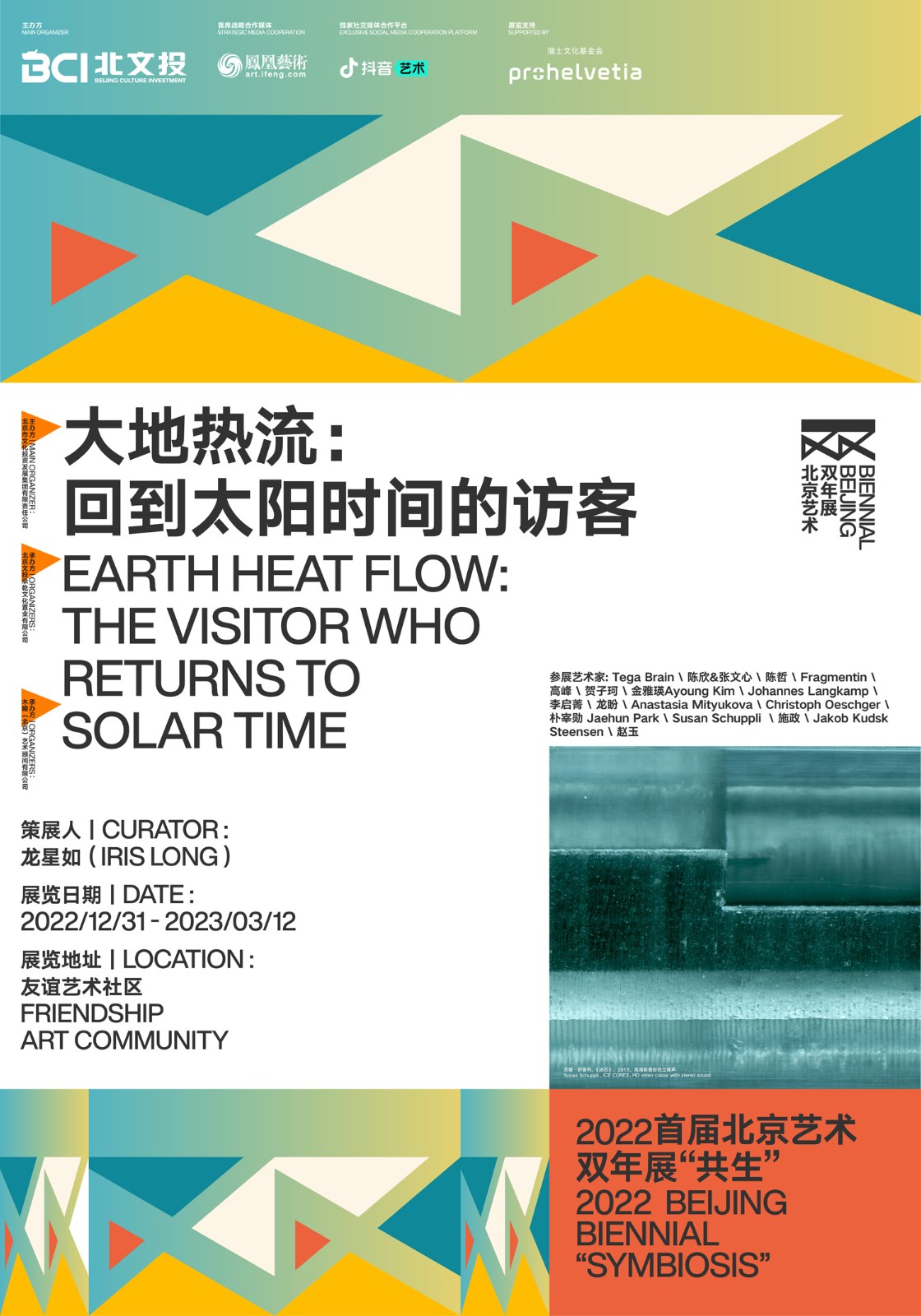
“Earth Heat Flow: The Visitor Who Returns to Solar Time” is exhibited at the Arts and Technology Unit of the First Beijing Biennial.
The exhibition entitled “Earth Heat Flow,” based on the unique winter heating in Beijing, attempts to discuss how to understand the technological culture and ecological status quo through the lens of thermal media and invites visitors to take a journey on “melting” from the perspective of dynamic “heat flow.” During the journey, imaginary creatures with heat-synesthesia will experience the daily temperature that human beings are accustomed to, track how heat exists as a foreshadowing of the contemporary scientific and technological system, and speculate on notions of entropy and time - both closely related to “heat.” Each work is included into the “melting” narrative, which may change the object’s shape or reveal hidden things. Melting may be violent or silent, like technology, which is both a dynamic plastic force and a revealing force.
The privileged sunshine in the winter of Beijing will be splashed on the “hotter” side of the exhibition hall. The works here discuss how our digital infrastructure (data centers, network switches, and optical fibers) constantly absorb the planet’s energy and build a stable thermal environment. Being Radiotropic describes our dependence on electromagnetic signals with life entities’ reaction to solar radiation. The Copper Tree reminds us how the copper element that supports optical cables and wires is generated from the earth’s veins. Porosity Valley imagines how a living element travels as half a mineral entity and half a digital bit. While Analog Sun Tracking replaces the heated sun in the human visual spectrum with black holes; Saros implies the fatal relationship between the solar flare explosion and the electronic system with a ridiculous fable.


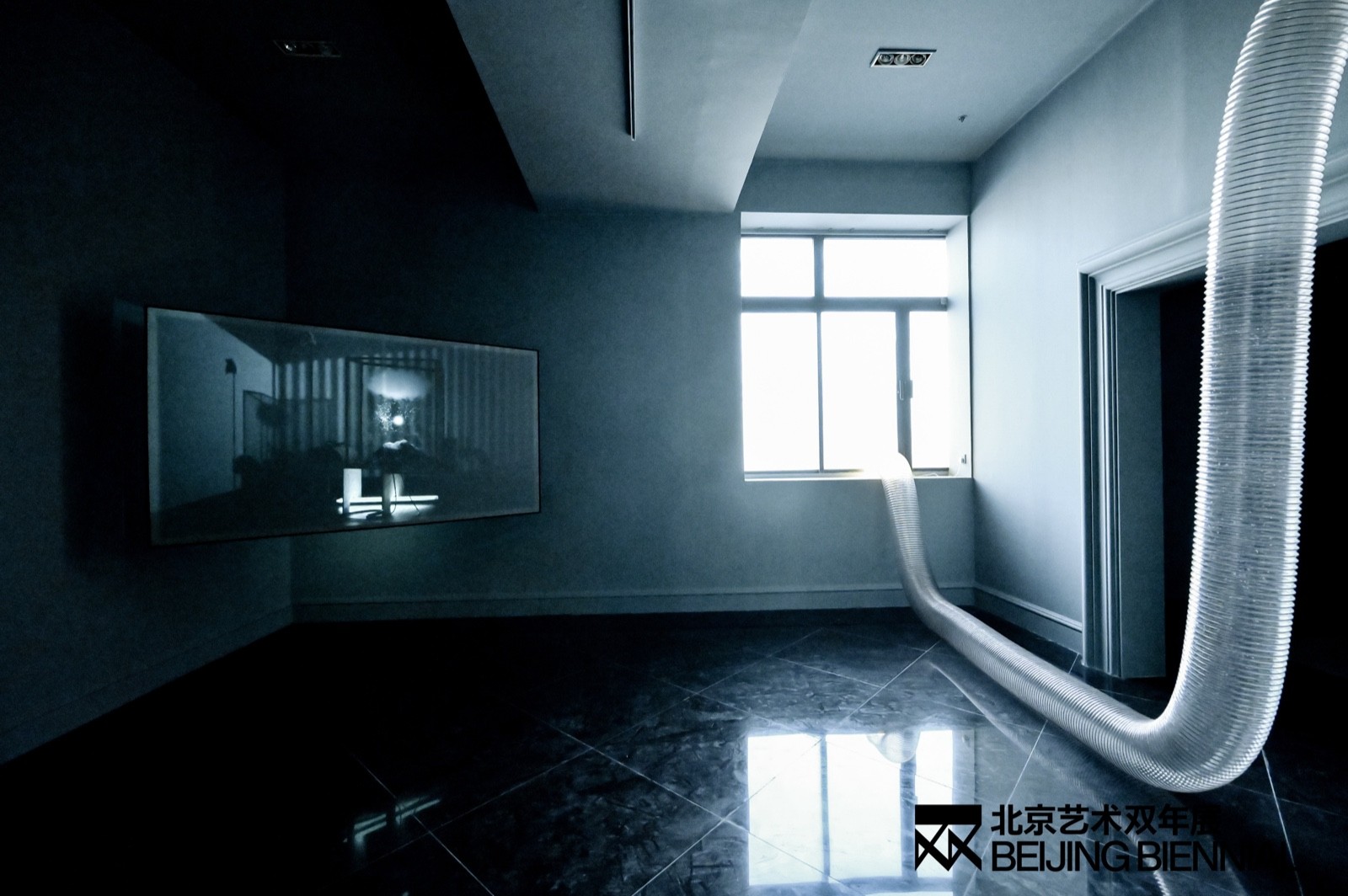
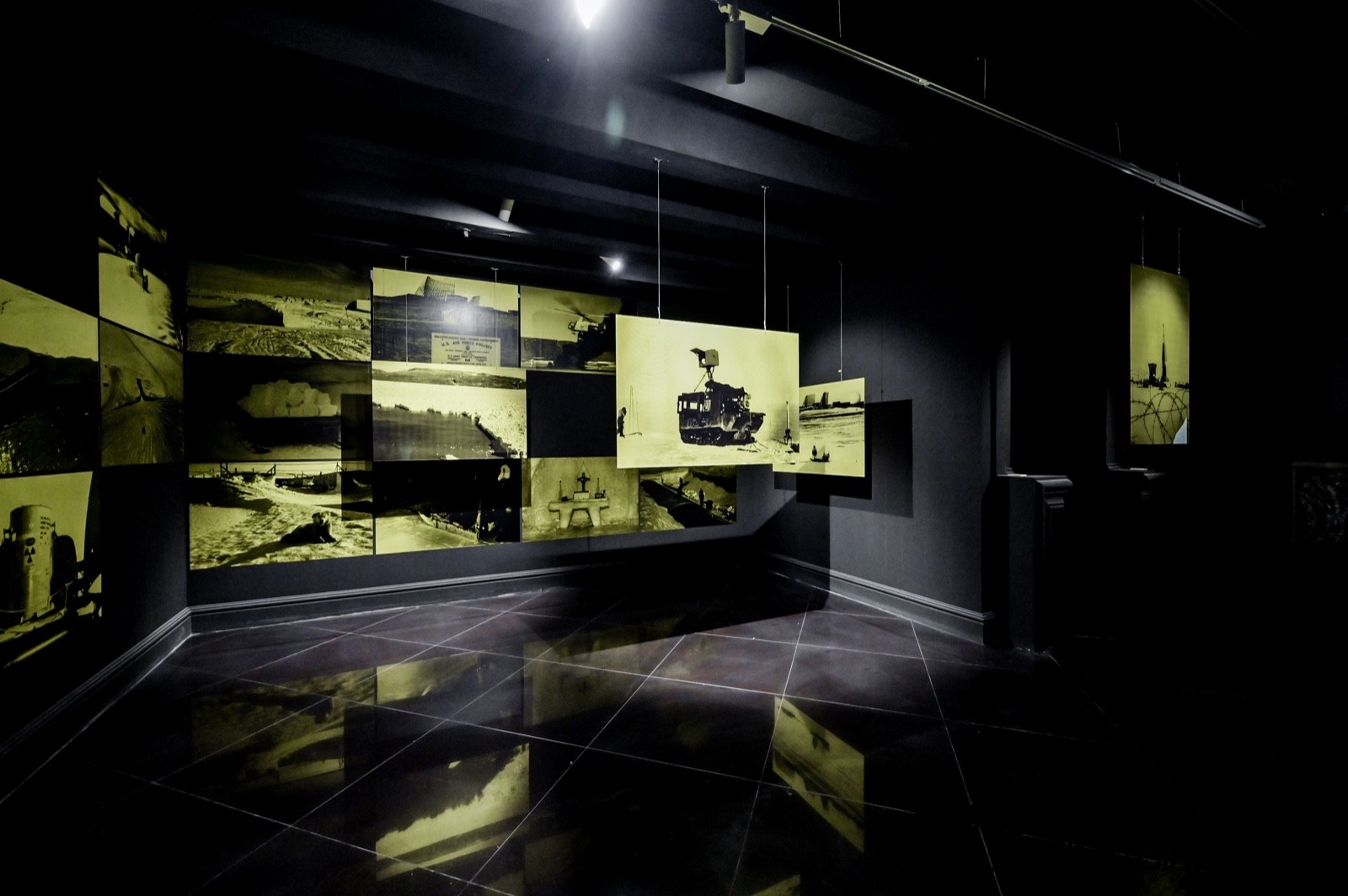
Exhibition View of 2022 Beijing Biennial at Friendship Art Community
Captured Nature reminds us how the man-made “cold/hot” system continuously supports a more moderate and pleasant living environment. However, these control technologies are also involved in the planet’s natural cold and heat flow for water and wind. Even ocean currents are cooling the roaring machine room, and the neon on which the lithography machine depends also relies on the low-temperature distillation of air by the separation equipment (Do not dwell on that hazy glow). This inlaid relationship of energy, suggesting the fragile and dark side of the man-made technological environment, leads us to the deeper and colder side of the exhibition hall, where the stable environment we created by regulating temperature and heat energy is disturbed and reversed. Life from remote underground servers penetrates people’s skin via liquid (Aquaphobia). Three groups of works related to glaciers depict the history of energy exploitation, cold war facilities, and ancient microorganisms solidified by ice.
When that computer-rendered iceberg collapsed in silence like Greenland Fjord (Melting into Time), or the fireworks in the computer quietly bloomed (Fireworks Universe), we seem to feel that the earth naturally contains the potential energy of entropy increases and the desire for reversing entropy, as well as the tension between the two. As Endangered Herbarium tries to store plants’ life, this storage’s effectiveness goes with the sun’s rhythm. In the chaotic zone before the artificial light sources light up (891 Dusks: An Encyclopedia of Psychological Experiences) and after the natural light sources dissipate, when all the machine-generated words become fuzzy lumps with the thermal paper exposed to the air (A Sigh), people stand in the heat flow of the earth again to understand everything carried by our technology and ecosystem and the epoch witnessed by the vertical space between the solar radiation and the thermal structure of the lithosphere, or, the geographical territory between the polar frozen soil and the equatorial sunshine.
Brave and Bright

Starting from the shaping and generation of the image of Chinese people since 1949, the exhibition shows and discusses how the concept of health and hygiene and its image are possible, how they occur, and in what ways they reflect the social reality of various periods in China, with the clues of the Patriotic Health Campaign carried out nationwide since the 1950s, the posture changes sweeping the country (such as gymnastics, martial arts, dance, drama, etc.) and their derivative meanings.
Courtesy of the Organizer.




